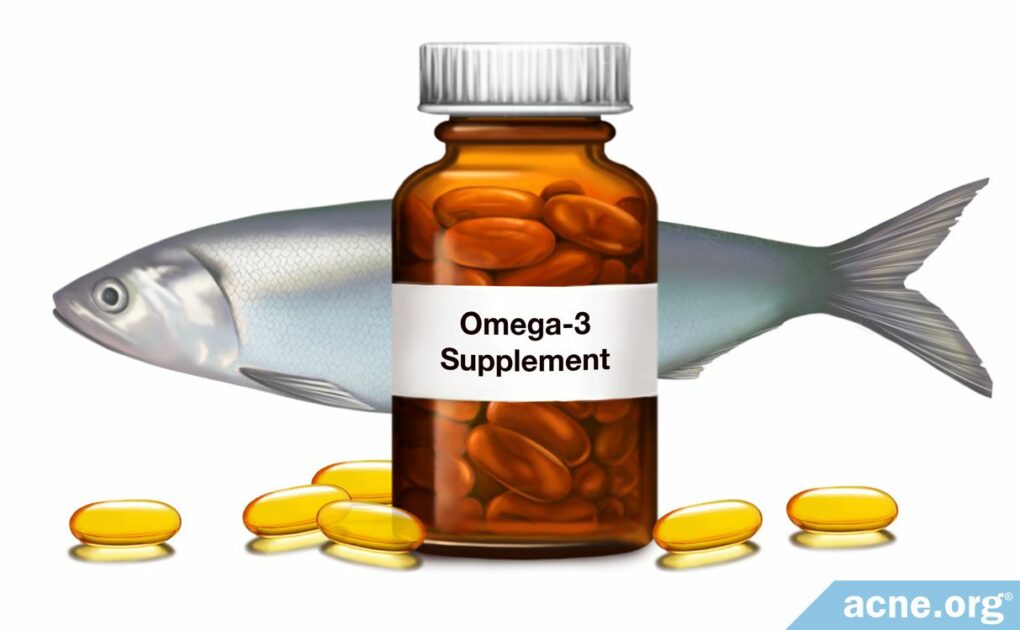Wild, Fatty, Cold-Water Fish Is a Good Source, and So Are Fish Oil and Micro-algae Supplements

The Essential Info
Omega-3 fatty acids are important to the body in a variety of ways, including reducing inflammation. Since acne is primarily an inflammatory disease, they could potentially play a role in helping to reduce acne.
The two most important omega-3 fatty acids, EPA and DHA, are present primarily in wild (not farmed) fish, especially in oily/fatty fish, such as tuna, salmon, mackerel, herring, and sardines. Consuming more wild fatty fish increases EPA and DHA levels in the bloodstream, but getting enough is almost impossible in today’s modern world. Fortunately, fish oil and krill oil supplements containing EPA and DHA also increase the levels of these fatty acids in the bloodstream, and are equally as effective.
Choosing a Supplement: Choose a known and trusted brand to ensure that you obtain a high-quality product, and take no more than 6 pills per day, or 3 “concentrated” pills. If you are vegetarian, try a microalgae (often simply called algae) omega-3 supplement.
From Dan: I take 5 or 6 cod liver oil pills per day because I find the science behind omega-3s to be compelling not only for acne but for health in general. I choose cod liver oil in particular because I don’t get much sun exposure and cod liver oil also contains vitamin D. A little tip I have is to put them in my freezer as soon as you buy them to maintain freshness and reduce fish oil burps.

The Science
- What Are Omega-3 Fatty Acids?
- Importance of Omega-3 Fatty Acids
- Increasing the Levels of Omega-3 Fatty Acids in the Body
- What to Look for When Purchasing Supplements
What Are Omega-3 Fatty Acids?
An omega-3 fatty acid is a type of unsaturated fatty acid, needed for proper functioning of the body. The three main omega-3 fatty acids are:
- Alpha-linolenic acid (ALA)
- Eicosapentaenoic acid (EPA)
- Docosahexaenoic acid (DHA)
When it comes to acne, EPA and DHA are the two most important ones.
Although the body needs omega-3 fatty acids, it cannot produce them itself. They must be consumed through the diet. For this reason, omega-3 fatty acids are called essential fatty acids. Despite their importance, most people consume less than 100mg per day, which is only about 1/5 to 1/18 of the recommended amount.1
Importance of Omega-3 Fatty Acids
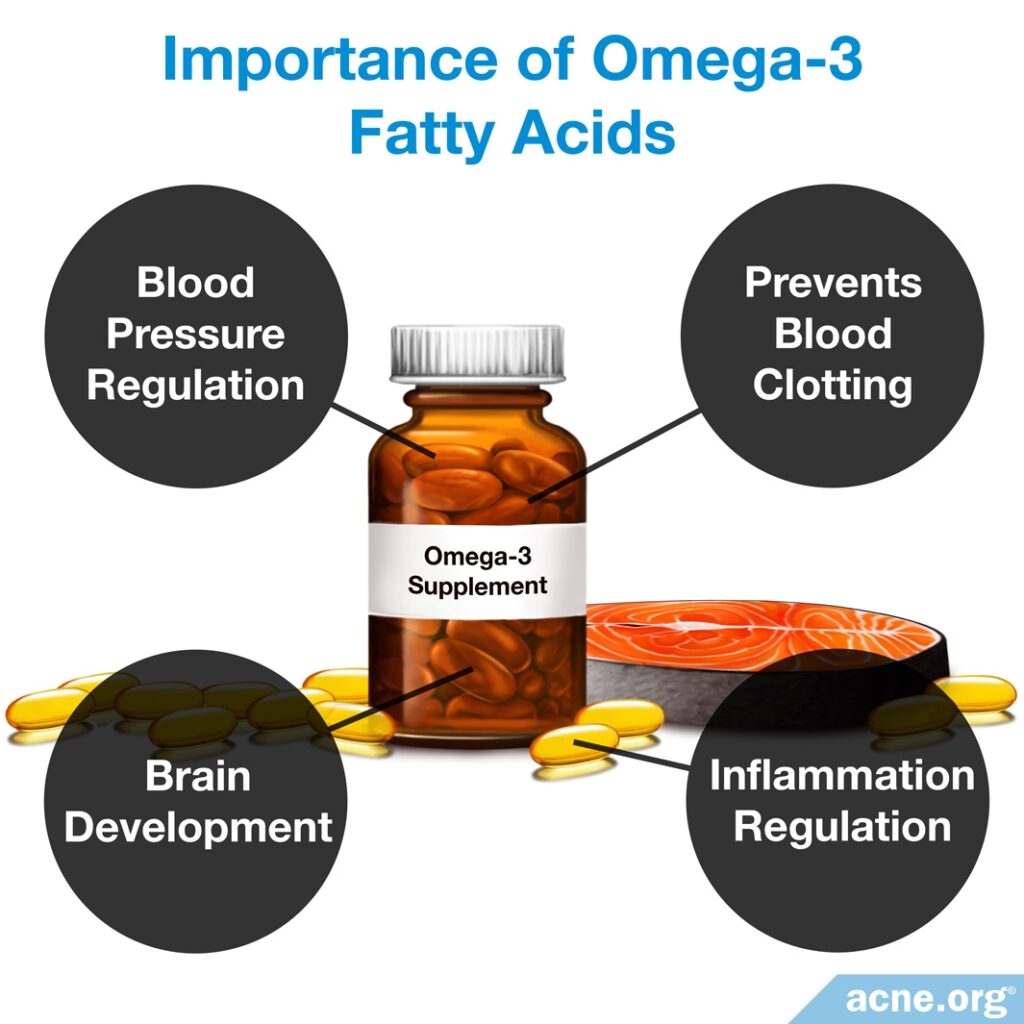
Omega-3 fatty acids are important in a range of processes in the human body, such as:
- Regulation of blood-pressure
- Clotting of blood
- Development of the brain
- Regulation of inflammation1
Since acne is primarily an inflammatory disease, when it comes to acne, it is the regulation of inflammation that matters.
Increasing the Levels of Omega-3 Fatty Acids in the Body
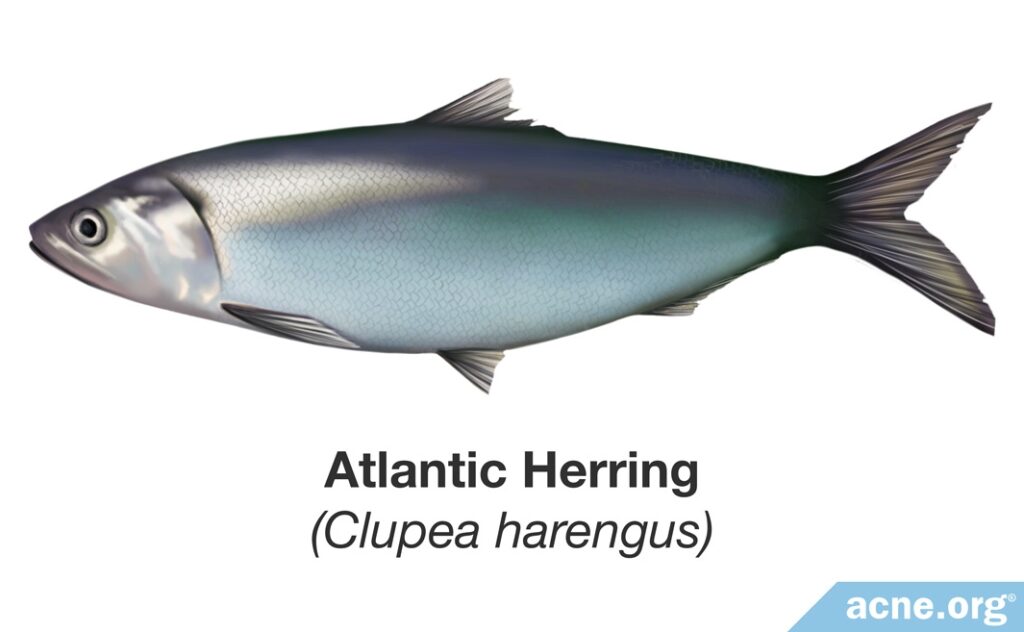
The primary dietary source of EPA and DHA is wild fish. The levels of EPA and DHA in the fish depend on a number of factors:
- The species of fish
- The total fat content of the individual fish
- The waters in which the fish lives
Oily/fatty fish that live in open, colder waters, such as tuna, salmon, mackerel, herring, and sardines, contain the highest levels of EPA and DHA. These fish store the omega-3 fatty acids in their flesh, which we eat. Non-fatty, or lean, fish store these substances in their liver, which normally is not eaten, so lean fish are not ideal in this regard. For example, one portion of salmon (a fatty fish) contains 1.5g of omega-3 fatty acids, and one portion of mackerel (another fatty fish) contains 3g of omega-3 fatty acids, while one portion of cod (a lean fish) contains only 0.3g of omega-3 fatty acids. The following table includes other examples of the amount of omega-3 fatty acid found in fish and other seafood.1
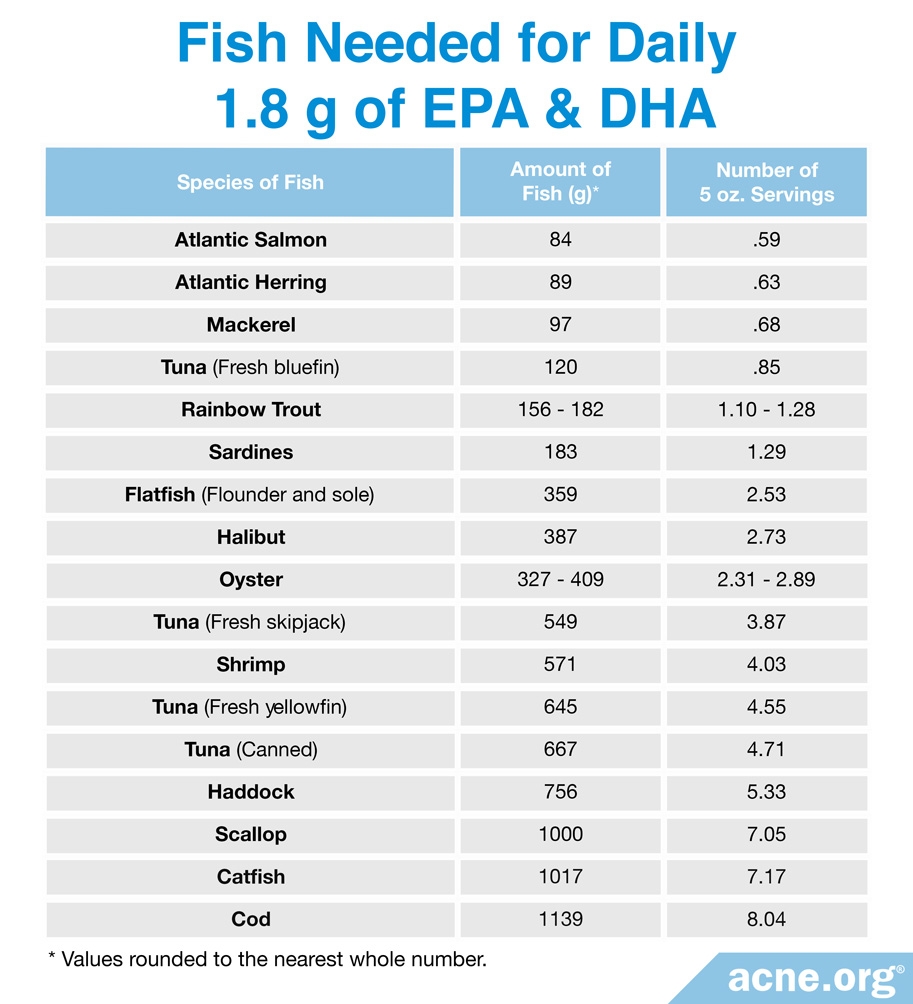
Scientific recommendations for a healthy diet now include EPA and DHA. The recommended levels range from an average of 0.5g (500mg) to 1.8g (1800mg) of omega-3 fatty acids per day, or at least two servings of fatty/oily fish per week.1 Below we can see how many servings are required depending on the type of fish you consume:
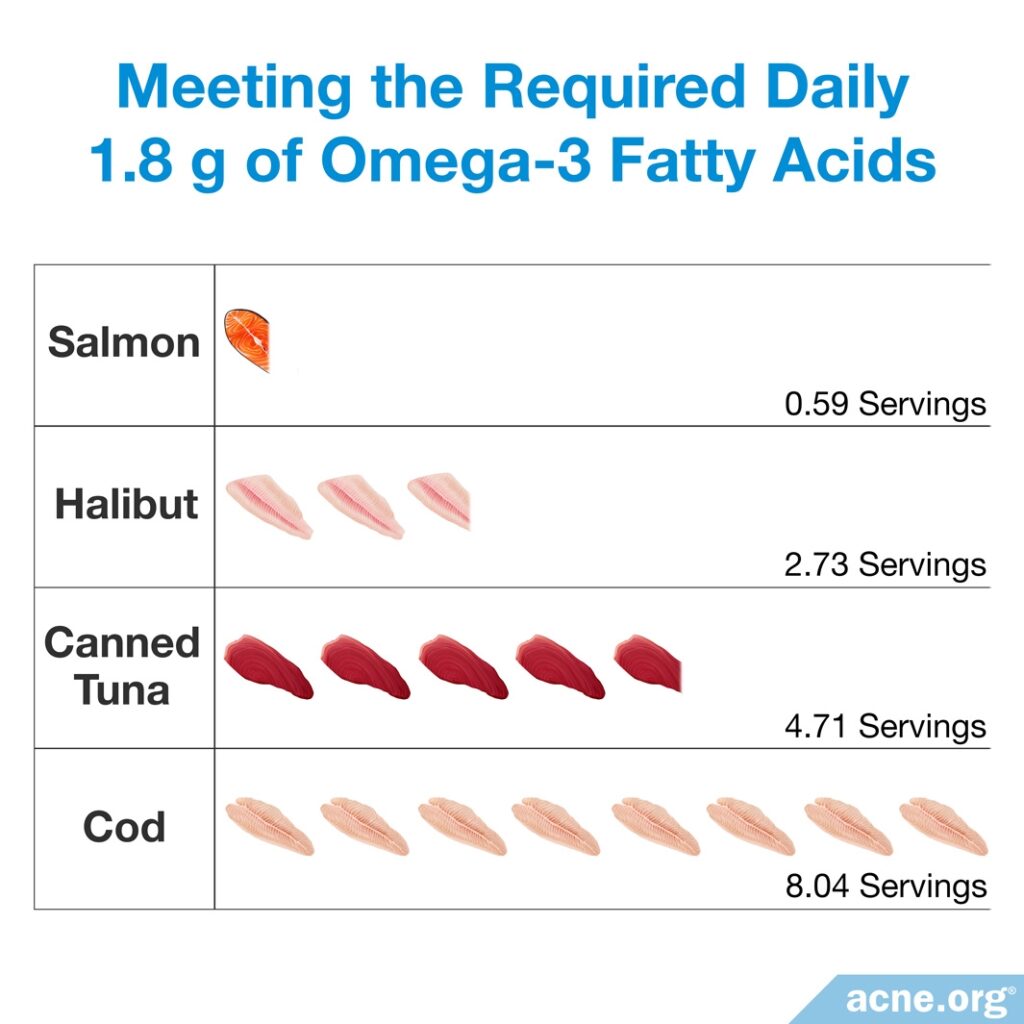
Two 5-oz. portions per day of salmon (fatty fish) provide about 1g of omega-3 fatty acids, which is in the recommended range, but two similar portions per day of cod (lean fish) provide only 0.1g of omega-3 fatty acids, which is well below the minimum of the recommended range.2
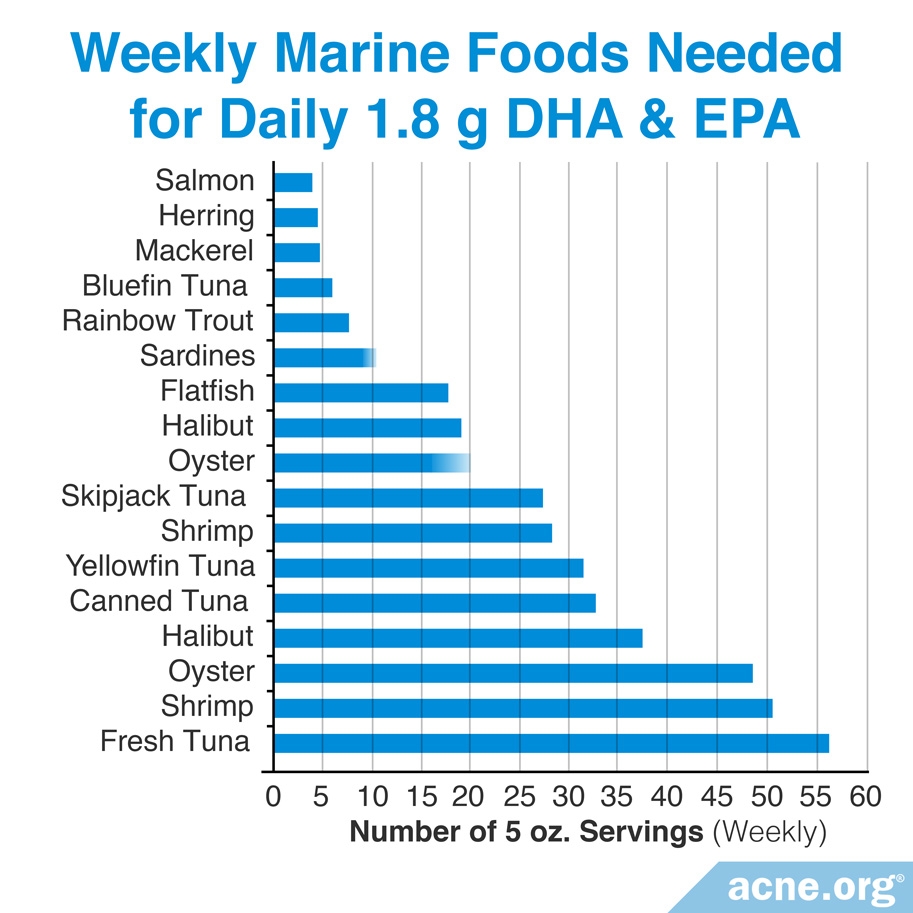
In addition to the difficulty of obtaining enough of the right kind of fish, there are two other concerns:
- The fish may be contaminated with toxins, such as mercury.
- The fish may be farmed and therefore contain lower levels of omega-3 fatty acids than the wild variety.
- The omega-3 fatty acids may be degraded by high cooking-temperatures, especially by being fried.2
These concerns point to the need for supplementation of omega-3 fatty acids since diet alone is not sufficient in this regard.
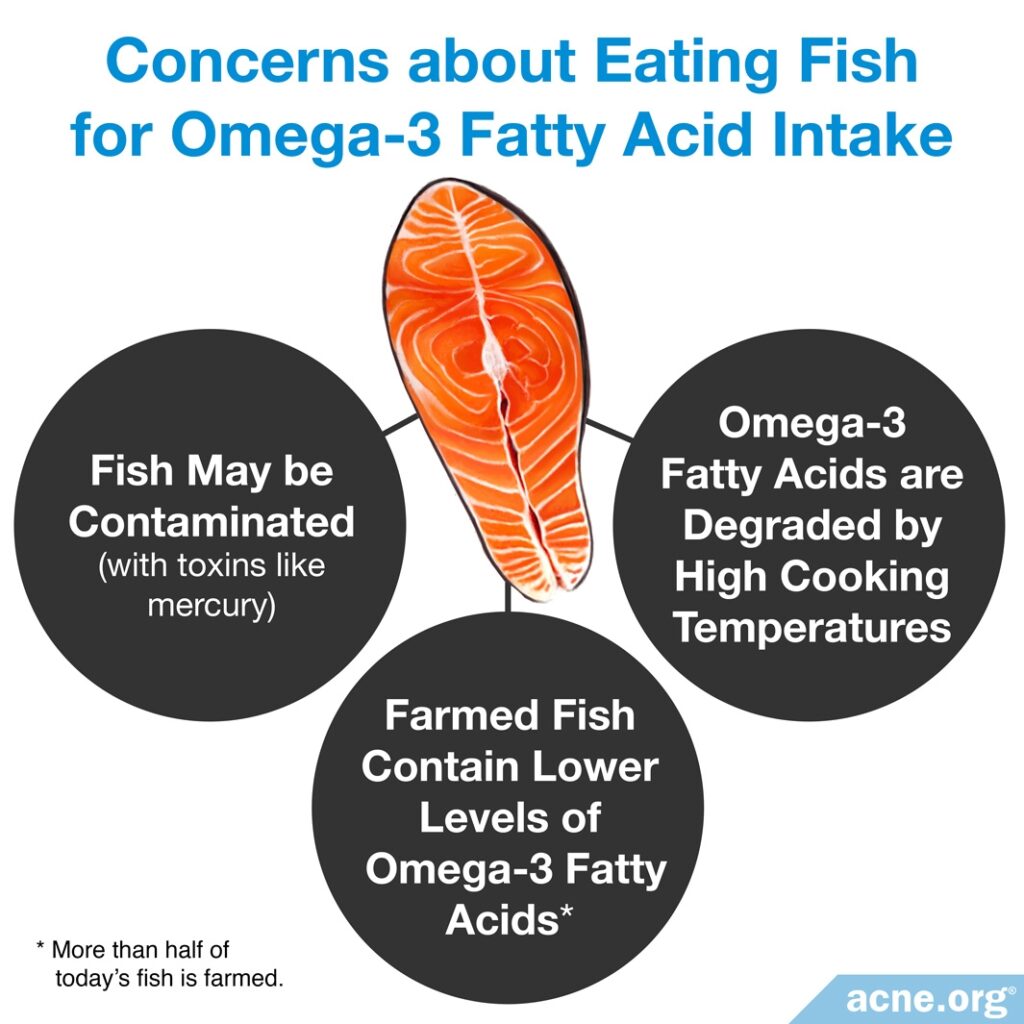
Supplements for Omega-3 Fatty Acids: What to Look for When Purchasing Supplements
Pharmaceutical companies responded to the therapeutic potential of omega-3 fatty acids by manufacturing fish oil-filled capsules that contain high levels of purified EPA and DHA. People can take these supplements in order to achieve and maintain adequate levels of these compounds in the bloodstream.
Most of the capsules contain about 90% EPA and DHA, which means that a 1g capsule contains about 900mg of these fatty acids. This is well above the level of less than 100mg per day of omega-3 fatty acids in the average diet. This means that a single capsule contains more omega-3 fatty acids than the average person would ingest in one week.
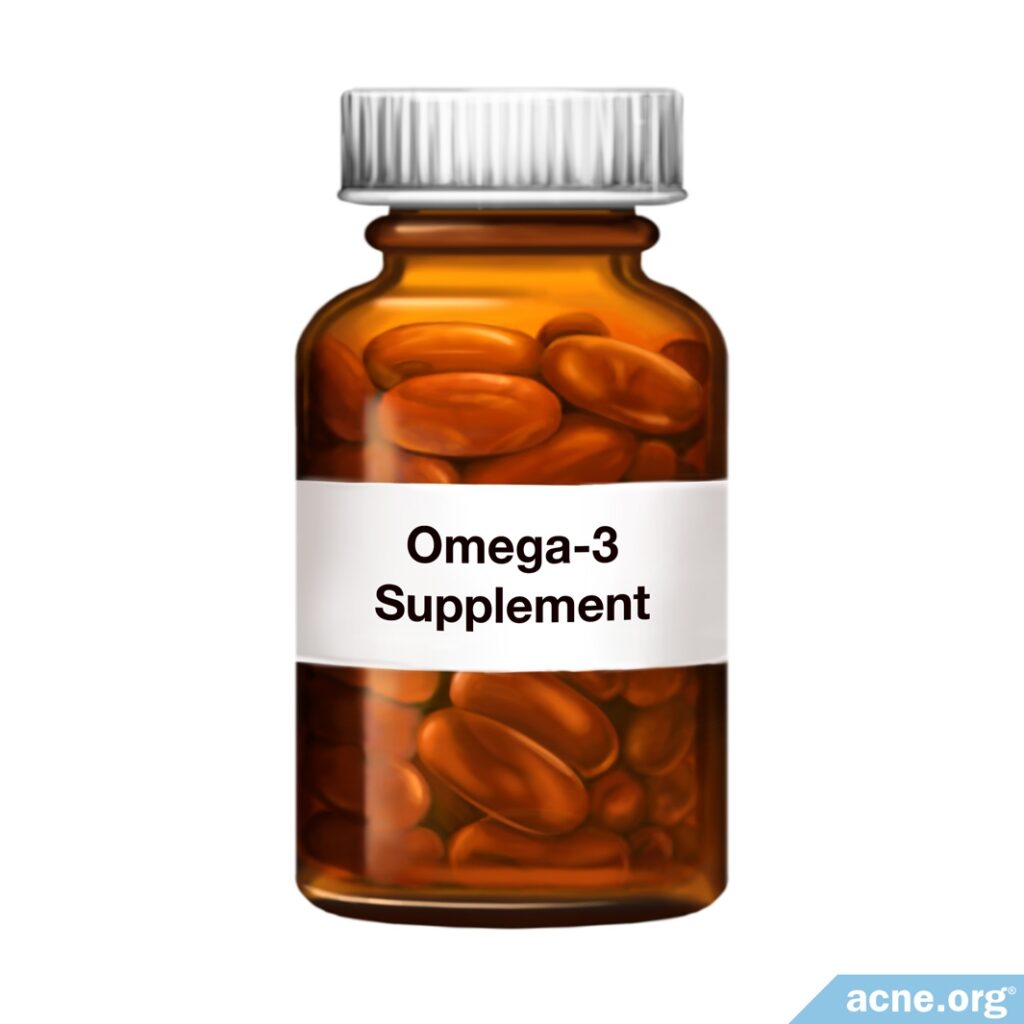
Omega-3 supplements undergo a purification process. This purification process ensures that the supplements are not contaminated with mercury and other toxins. The purification, along with the addition of vitamin E, also reduces what are commonly referred to as fish burps once the supplement is swallowed so that it is more easily tolerated.2
Micro-algae: a vegetarian option for DHA
Fish contain omega-3 fatty acids because they consume micro-algae, or they consume prey that ingested micro-algae. Therefore, another source of omega-3 fatty acids in supplements is micro-algae itself. The oils from micro-algae contain 30 to 40 percent of either EPA and/or DHA. These products are found to be safe, and the fatty acid is easily absorbed in the body.2
Bioavailability
Foods and supplements differ in how easily the omega-3 fatty acids they contain are able to be used in the body. This is known as bioavailability. The bioavailability of omega-3 fatty acids is highest after eating fatty fish or ingesting oil from fatty fish. Consuming oil from krill (a small shrimp that ingests micro-algae) raises levels of omega-3 fatty acids in the bloodstream slightly higher than oil from fish. Fish oil, krill oil, and micro-algae all are good sources of omega-3 fatty acids.2
Up to 6 pills a day is safe for adults
The European Food Safety Authority finds that supplements of EPA and DHA up to 5g per day is safe for adults. This equates to 5-6 fish oil pills. The European Food Safety Authority also sets safety limits for supplements of EPA alone up to 1.8g per day, and supplements of DHA alone up to 1g per day.2
What if my supplement only contains EPA or DHA on its own?
Studies show that ingesting DHA increases both DHA and EPA in the bloodstream. On the other hand, ingesting EPA increases only the level of EPA in the bloodstream, and not the level of DHA.3 So, it is preferable to choose an omega-3 supplement that contains only DHA over a supplement that contains only EPA.
References
- Wall, R., Ross, R. P., Fitzgerald, G. F. & Stanton, C. Fatty acids from fish: the anti-inflammatory potential of long-chain omega-3 fatty acids. Nutr. Rev. 68, 280 – 289 (2010). https://www.ncbi.nlm.nih.gov/pubmed/20500789
- Marangoni, F. & Poli, A. n-3 fatty acids: functional differences between food intake, oral supplementation and drug treatments. Int. J. Cardiol. 170, S12 – S15 (2013). https://www.ncbi.nlm.nih.gov/pubmed/24045226
- Arterburn, L. M., Hall, E. B. & Oken, H. Distribution, interconversion, and dose response of n-3 fatty acids in humans. Am. J. Clin. Nutr. 83, 1467S – 1476S (2006). https://www.ncbi.nlm.nih.gov/pubmed/16841856
 Acne.org Products
Acne.org Products